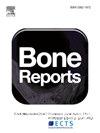Partial cementocyte ablation does not reduce cellular cementum apposition in a mouse model of molar super-eruption
IF 2.6
Q3 ENDOCRINOLOGY & METABOLISM
引用次数: 0
Abstract
Cementocytes reside in the cellular cementum of the apical tooth root and resemble bone osteocytes in their markers, lacunocanalicular network, and response to mineralization defects. However, it is unclear if cementocytes have a role in regulating cellular cementum similar to that of osteocytes in controlling bone formation and resorption. The Dmp1Cre-iDTRfl/fl (Dmp1-DTR) mouse sensitizes Dmp1-expressing cells, including osteocytes and cementocytes, to diphtheria toxin (DT), allowing selective ablation of cell populations. Compared to iDTRfl/fl control (CTR) mice, 1.0 μg/kg intraperitoneal DT administration at 6 and 8 weeks of age increased femur cortical bone porosity and reduced alveolar bone density in Dmp1-DTR mice, validating the model. DT administration eliminated approximately 80 % of alveolar bone osteocytes and 60 % of cementocytes in Dmp1Cre-iDTRfl/fl mice. Mice were subjected to the challenge of unopposed first molar super-eruption, which promotes increased cellular cementum apposition. Maxillary molars were bilaterally extracted at 7 weeks, and effects on cellular cementum accumulation in mandibular first molars were analyzed at 3 weeks post-procedure using micro-computed tomography and histology. DT-directed cementocyte ablation did not alter cellular cementum volume, density, or porosity vs. CTR mice. Immunostaining showed similar distributions between treatment groups of osteopontin (OPN), an extracellular matrix protein associated with axial tooth movement. Localization of DMP1 in cellular cementum and cementocyte networks of Dmp1-DTR mice appeared reduced compared to CTR mice. Within the limits of the study, these results suggest that cementocytes are not essential for new cellular cementum formation under challenge. Further insights into roles for cementocytes require additional in vivo approaches.
在小鼠磨牙超萌模型中,部分骨水泥细胞消融不能减少骨水泥细胞的附着
骨水泥细胞存在于尖牙根的细胞骨水泥中,在它们的标记物、腔隙管网络和对矿化缺陷的反应方面与骨细胞相似。然而,骨水泥细胞在调节骨水泥方面是否具有类似于骨细胞在控制骨形成和骨吸收方面的作用尚不清楚。Dmp1Cre-iDTRfl/fl (Dmp1-DTR)小鼠使表达dmp1的细胞(包括骨细胞和骨质细胞)对白喉毒素(DT)敏感,允许选择性消融细胞群。与iDTRfl/fl对照(CTR)小鼠相比,Dmp1-DTR小鼠在6和8周龄时腹腔注射1.0 μg/kg DT可增加股骨皮质骨孔隙度,降低牙槽骨密度,验证了模型的有效性。在Dmp1Cre-iDTRfl/fl小鼠中,DT治疗消除了大约80%的牙槽骨骨细胞和60%的骨水泥细胞。小鼠受到无对抗的第一磨牙超级爆发的挑战,这促进了细胞骨质增生。7周时双侧拔除上颌磨牙,术后3周通过显微计算机断层扫描和组织学分析对下颌第一磨牙骨质积累的影响。与CTR小鼠相比,ct定向骨水泥细胞消融没有改变骨水泥体积、密度或孔隙度。免疫染色显示骨桥蛋白(OPN)在治疗组之间的分布相似,骨桥蛋白是一种与轴向牙齿运动相关的细胞外基质蛋白。与CTR小鼠相比,DMP1 - dtr小鼠的细胞骨水泥和骨水泥细胞网络中的DMP1定位明显减少。在本研究的范围内,这些结果表明,在挑战下,骨水泥细胞并不是形成新细胞骨水泥所必需的。进一步了解胶质细胞的作用需要额外的体内方法。
本文章由计算机程序翻译,如有差异,请以英文原文为准。
求助全文
约1分钟内获得全文
求助全文
来源期刊

Bone Reports
Medicine-Orthopedics and Sports Medicine
CiteScore
4.30
自引率
4.00%
发文量
444
审稿时长
57 days
期刊介绍:
Bone Reports is an interdisciplinary forum for the rapid publication of Original Research Articles and Case Reports across basic, translational and clinical aspects of bone and mineral metabolism. The journal publishes papers that are scientifically sound, with the peer review process focused principally on verifying sound methodologies, and correct data analysis and interpretation. We welcome studies either replicating or failing to replicate a previous study, and null findings. We fulfil a critical and current need to enhance research by publishing reproducibility studies and null findings.
 求助内容:
求助内容: 应助结果提醒方式:
应助结果提醒方式:


